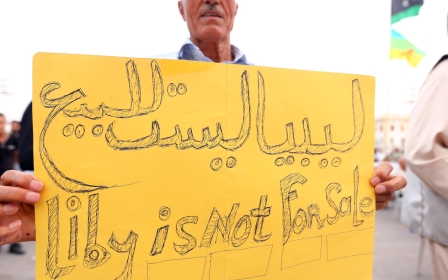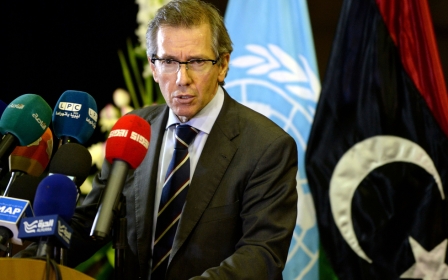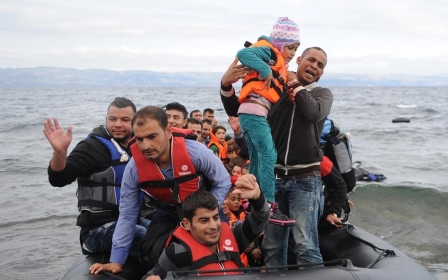Two new Libyan suspects identified in 1988 Lockerbie bombing
Scottish investigators are continuing their probe into the 1988 bombing that led to the deaths over nearly 300 people

Police look at the wreckage of the airliner that exploded over Lockerbie on 22 December 1988 (AFP)
Published date: Jeudi 15 octobre 2015 - 17:51
|
Last update: 9 années 1 mois ago
Scottish prosecutors on Thursday said they had identified two new Libyan suspects in the bombing of a Pan Am jet over the Scottish town of Lockerbie in 1988, which killed 270 people.
Scottish and United States officials agree "there is a proper basis in law... to treat two Libyans as suspects in the continuing investigation into the bombing of flight Pan Am 103 over Lockerbie," according to a statement released by prosecutors.
"The two individuals are suspected of involvement, along with Abdelbaset Ali Mohmed Al Megrahi," it added.
Megrahi was found guilty of the bombing in 2001. He is the only person ever convicted of the crime.
Scotland's lead prosector on Thursday issued an International Letter of Request to the Libyan attorney general in Tripoli, which identifies the suspects and calls for cooperation.
"The Lord Advocate and the US Attorney General are seeking the assistance of the Libyan judicial authorities for Scottish police officers and the FBI to interview the two named suspects in Tripoli," the statement said.
The Scottish government released Megrahi on compassionate grounds in 2009 after he was diagnosed with terminal cancer. He died in Libya in 2012 still protesting his innocence.
Libya admitted responsibility for the bombing in 2003 and the government of slain leader Muammar Gaddafi eventually paid $2.7 billion in compensation to victims' families as part of a raft of measures aimed at a rapprochement with the West.
Since the fall of the Gaddafi regime in 2011, British and US detectives have travelled to Libya to investigate whether other perpetrators can be identified.
Middle East Eye propose une couverture et une analyse indépendantes et incomparables du Moyen-Orient, de l’Afrique du Nord et d’autres régions du monde. Pour en savoir plus sur la reprise de ce contenu et les frais qui s’appliquent, veuillez remplir ce formulaire [en anglais]. Pour en savoir plus sur MEE, cliquez ici [en anglais].




